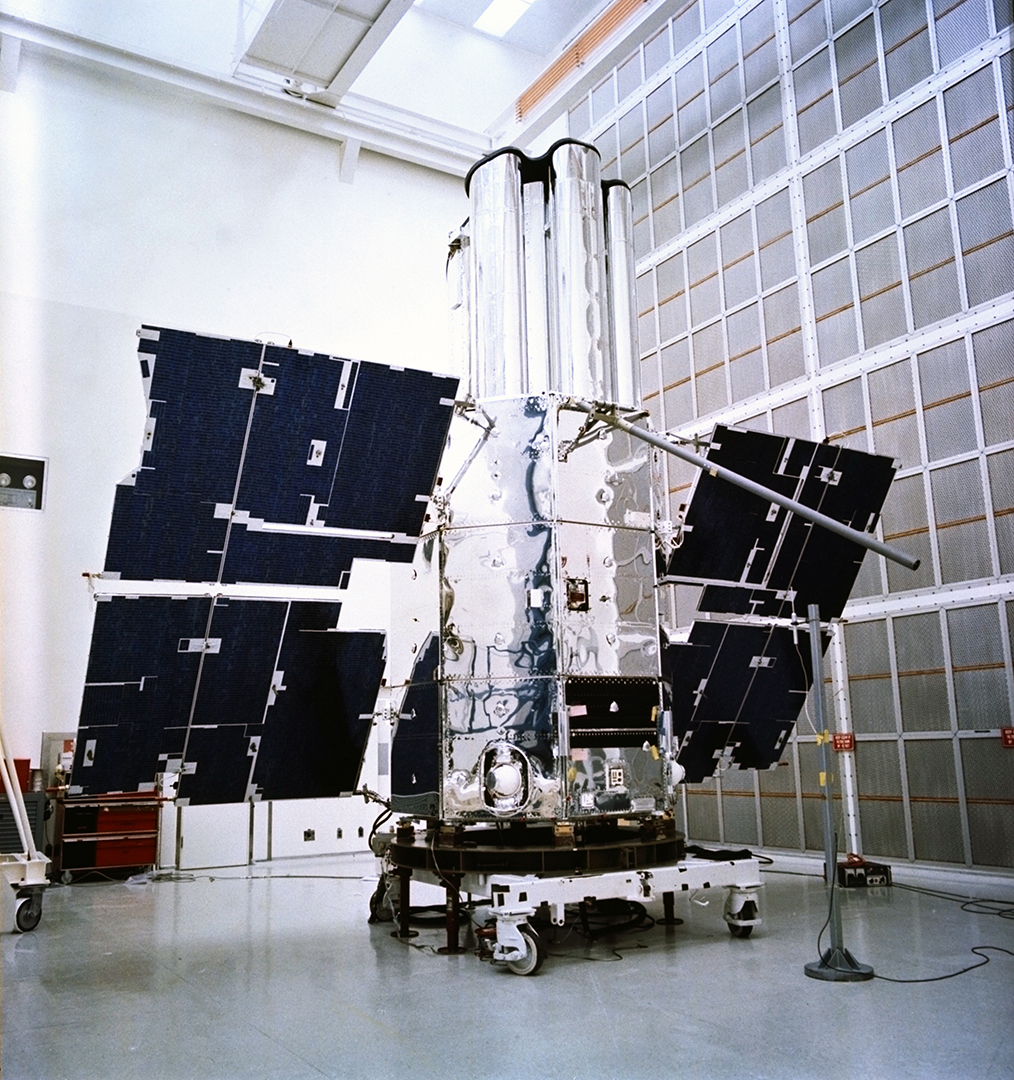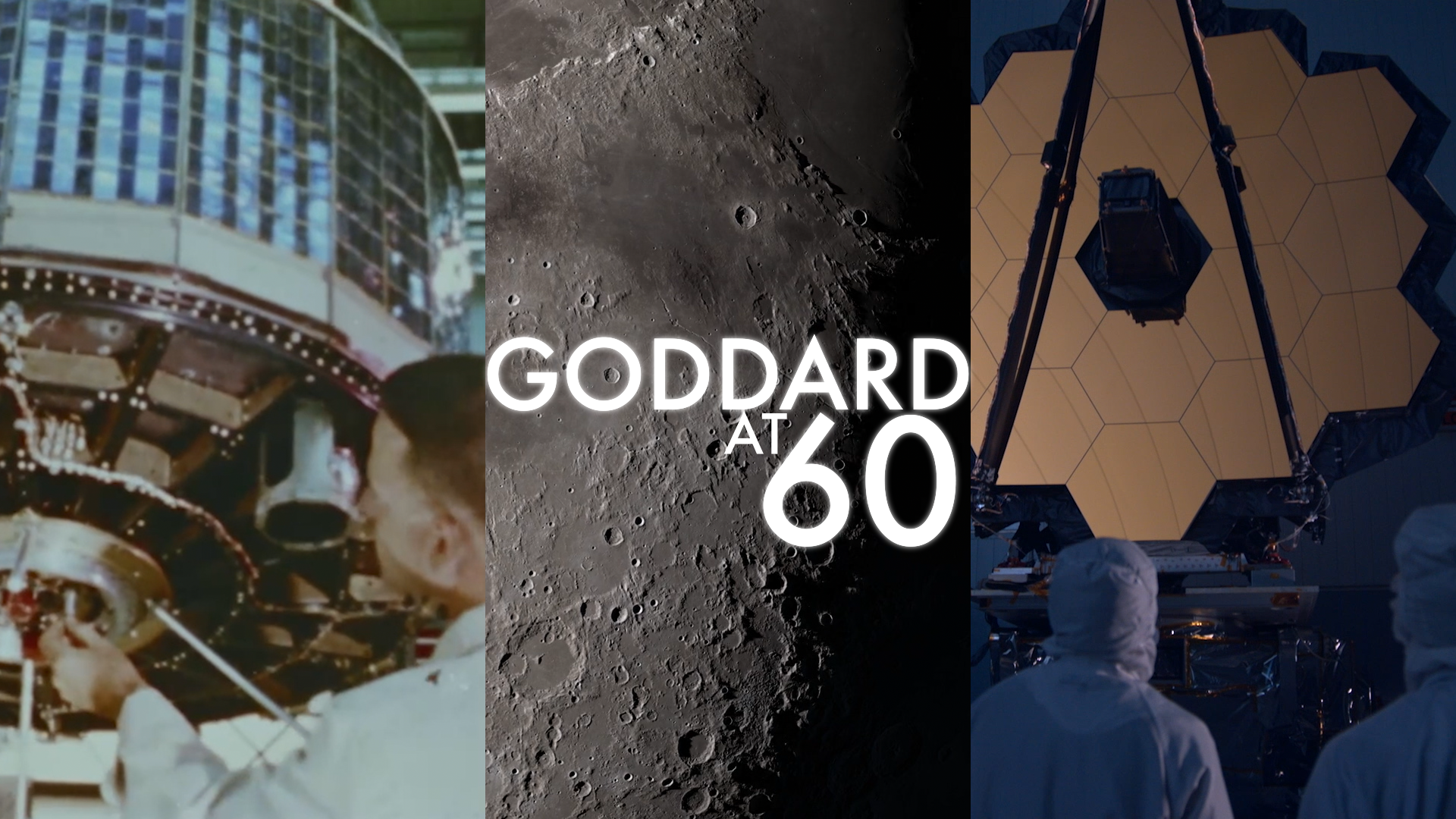50th Anniversary of NASA's OAO 2 Mission
“Seas of Infinity” (1968), full-length version scanned from 16mm color film and color corrected; run time 14:25.
Original description: The film opens with an explanation of the electromagnetic spectrum. The limited capabilities of skyhook balloons and sounding rockets are used to illustrate the need for orbiting observatories. Reviews the planning, development, launching and function of the Orbiting Astronomical Observatory, a series of orbiting telescopes which are being used to study our solar system and the stars beyond. Features comments by the following leading scientists on the potential of this advancement in astronomy: Dr. Arthur Code, Wisconsin telescopes; Dr. James Kupperian, Goddard Flight Center using Cassegrain designs; Dr. Fred Whipple on the ultraviolet light sky mapping project; and Dr. Donald Morton on the Princeton OAO ultraviolet spectroscopy project. The film has scenes of the assembly of the OAO. The OAO will be launched by an Atlas-Centaur.
Credit: NASA
Complete transcript available.
On Dec. 7, 1968, an Atlas-Centaur rocket carrying NASA’s heaviest and most ambitious uncrewed satellite to date blasted into the sky from Launch Complex 36B at Cape Canaveral Air Force Station, Florida.
Formally known as Orbiting Astronomical Observatory (OAO) 2 and nicknamed Stargazer, it would become NASA’s first successful cosmic explorer and the direct ancestor of Hubble, Chandra, Swift, Kepler, FUSE, GALEX and many other astronomy satellites.
OAO 2 provided the first orbital stellar observations in ultraviolet light, shorter than wavelengths in the visible range spanning 3,800 (violet) to 7,500 (red) angstroms. Much of UV light is screened out by the atmosphere and unavailable to ground-based telescopes. Stargazer's experiments made nearly 23,000 measurements, showed that young, hot stars were hotter than theoretical models of the time indicated, confirmed that comets are surrounded by vast clouds of hydrogen and discovered a curious feature of the interstellar medium that would take scientists decades to understand.
One of the key problems scientists had to solve was how to direct a telescope to any point on the celestial sphere and hold it there for a half hour or so in order for instruments to record the data from faint sources. This makes OAO 2 the ancestor of all space telescopes that can point to a given spot on the sky and track it for an extended period.
Prior to OAO 2, ultraviolet observations of stars were acquired by suborbital sounding rockets which collect data for only five minutes each flight as they arc above much of the atmosphere. By 1968, it was estimated that sounding rockets had captured a total of three hours of stellar UV measurements in some 40 flights. OAO 2 could collect more data than this in a single day.
OAO 2 carried two experiments. Project Celescope (from "celestial telescope") was led by Fred Whipple, director of the Smithsonian Astrophysical Observatory in Cambridge, Massachusetts. The Wisconsin Experiment Package was led by Arthur Code, a professor of astronomy at the University of Wisconsin-Madison. The experiments were mounted back-to-back within the 4,436-pound (2,012 kilogram) spacecraft and looked out opposite ends, taking turns viewing the universe.
A shortened cut of "Seas of Infinity" above; run time 7:13.
Credit: NASA
Complete transcript available.
Watch this video on the NASA Goddard YouTube channel.
“Orbiting Astronomical Observatory" (1968), full version, color corrected; run time 2:21.
Credit: NASA
Complete transcript available.
Clean room footage of OAO 2 extracted from both of the above films.
Credit: NASA

An illustration of OAO 2, nicknamed Stargazer, in orbit around Earth.
Credit: NASA

James Kupperian Jr., the project scientist for the Orbiting Astronomical Observatories, adjusts a model of the spacecraft on the set of "Seas of Infinity" in 1966.
Credit: NASA

James Kupperian Jr. (center), the project scientist for Orbiting Astronomical Observatories, adjusts a model of the spacecraft on the set of "Seas of Infinity" in 1966.
Credit: NASA

Technicians in a clean room at NASA’s Kennedy Space Center in Cape Canaveral, Florida, check out OAO 2 before the mission’s Dec. 7, 1968, launch. The white conical structures visible near the top of the spacecraft are two of its six star trackers, small telescopes that lock onto appropriate guide stars to keep the instruments on target.
Credit: NASA

NASA's OAO 2 satellite is shown mated to its Atlas-Centaur launch vehicle on Launch Complex 36B, Cape Canaveral Air Force Station, Florida, in fall 1968. It was NASA's largest, heaviest and most complex uncrewed spacecraft to date.
Credit: NASA

At 3:40 a.m. EST on Saturday, Dec. 7, 1968, NASA's OAO 2 blasts into the sky from Launch Complex 36B at Cape Canaveral Air Force Station, Florida.
Credit: NASA

In a dust-free plastic tent, the Orbiting Astronomical Observatory 1 spacecraft undergoes checkout tests at Grumman Aircraft Engineering Corp. in Bethpage, New York, in 1965. OAO 1 launched into orbit on April 8, 1966, but the spacecraft began experiencing problems in its power supply, including high-voltage arcing in the star trackers, just seven minutes after separating from its rocket. After three days and 20 orbits, controllers terminated the mission without activating any of the experiments.
Credit: NASA

In a dust-free plastic tent, the Orbiting Astronomical Observatory 1 spacecraft undergoes checkout tests at Grumman Aircraft Engineering Corp. in Bethpage, New York, in 1965. OAO 1 launched into orbit on April 8, 1966, but the spacecraft began experiencing problems in its power supply, including high-voltage arcing in the star trackers, just seven minutes after separating from its rocket. After three days and 20 orbits, controllers terminated the mission without activating any of the experiments.
Credit: NASA

Three OAO spacecraft stand in various stages of completion in the clean room at Grumman Aircraft Engineering Corp., Bethpage, New York, in 1964. The spacecraft in the background is a prototype being readied for shock, vibration, and thermal vacuum tests. The other two spacecraft are production models intended for flight.
Credit: NASA

Three OAO spacecraft stand in various stages of completion in the clean room at Grumman Aircraft Engineering Corp., Bethpage, New York, in 1964. The spacecraft in the foreground is a prototype being readied for shock, vibration, and thermal vacuum tests. The other two spacecraft are production models intended for flight.
Credit: NASA

Three OAO spacecraft stand in various stages of completion in the clean room at Grumman Aircraft Engineering Corp., Bethpage, New York, in 1964. The spacecraft in the foreground is a prototype being readied for shock, vibration, and thermal vacuum tests. The other two spacecraft are production models intended for flight.
Credit: NASA

Technicians at Grumman Aircraft Engineering Corp. in Bethpage, New York, inspect electrical connections on a production model of an Orbiting Astronomical Observatory satellite during construction in 1964.
Credit: NASA

Arthur Code (left), principal investigator of the Wisconsin Experiment Package on OAO 2, examines one of the 8-inch telescopes used as stellar photometers. Others shown are, from left to right, Theodore Houck, John McNall and Robert Bless.
Credit: Department of Astronomy, University of Wisconsin-Madison

Pre-integration checkout of the four 12-inch telescopes that formed the Smithsonian Astrophysical Observatory's Celescope experiment on OAO 2, circa mid-to-late 1960s. The next step would be placing the payload within the satellite housekeeping shroud.
Credit: Photograph courtesy of Bill Waggener and Ball Aerospace. Curatorial Files, "Celescope," Department of Space History, National Air and Space Museum

A sticker design for the OAO satellites.
Credit: NASA
For More Information
Credits
Please give credit for this item to:
NASA's Goddard Space Flight Center. However, individual items should be credited as indicated above.
-
Producer
- Scott Wiessinger (USRA)
-
Science writer
- Francis Reddy (University of Maryland College Park)
-
Editor
- Scott Wiessinger (USRA)
Release date
This page was originally published on Tuesday, December 11, 2018.
This page was last updated on Wednesday, May 3, 2023 at 1:46 PM EDT.

